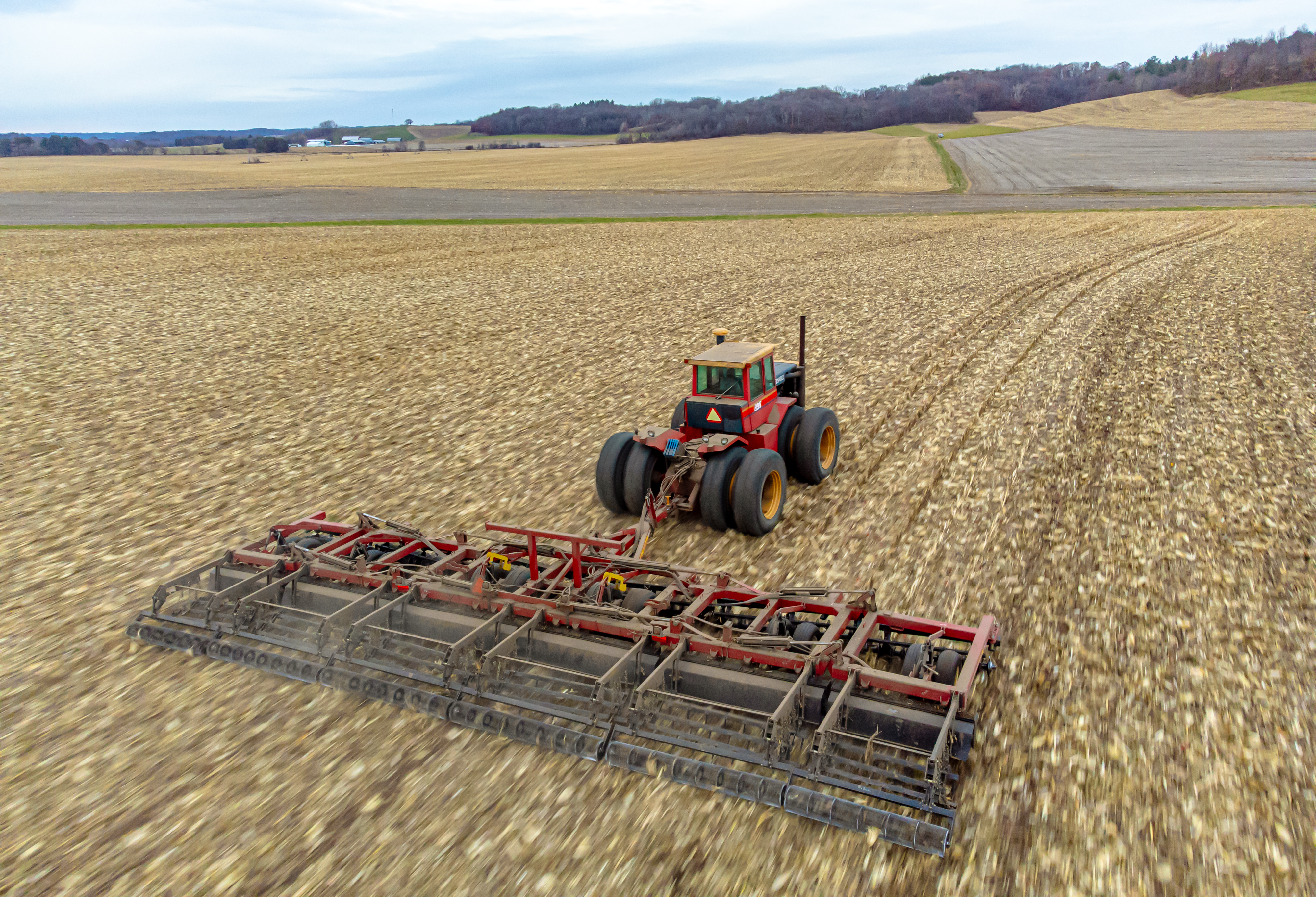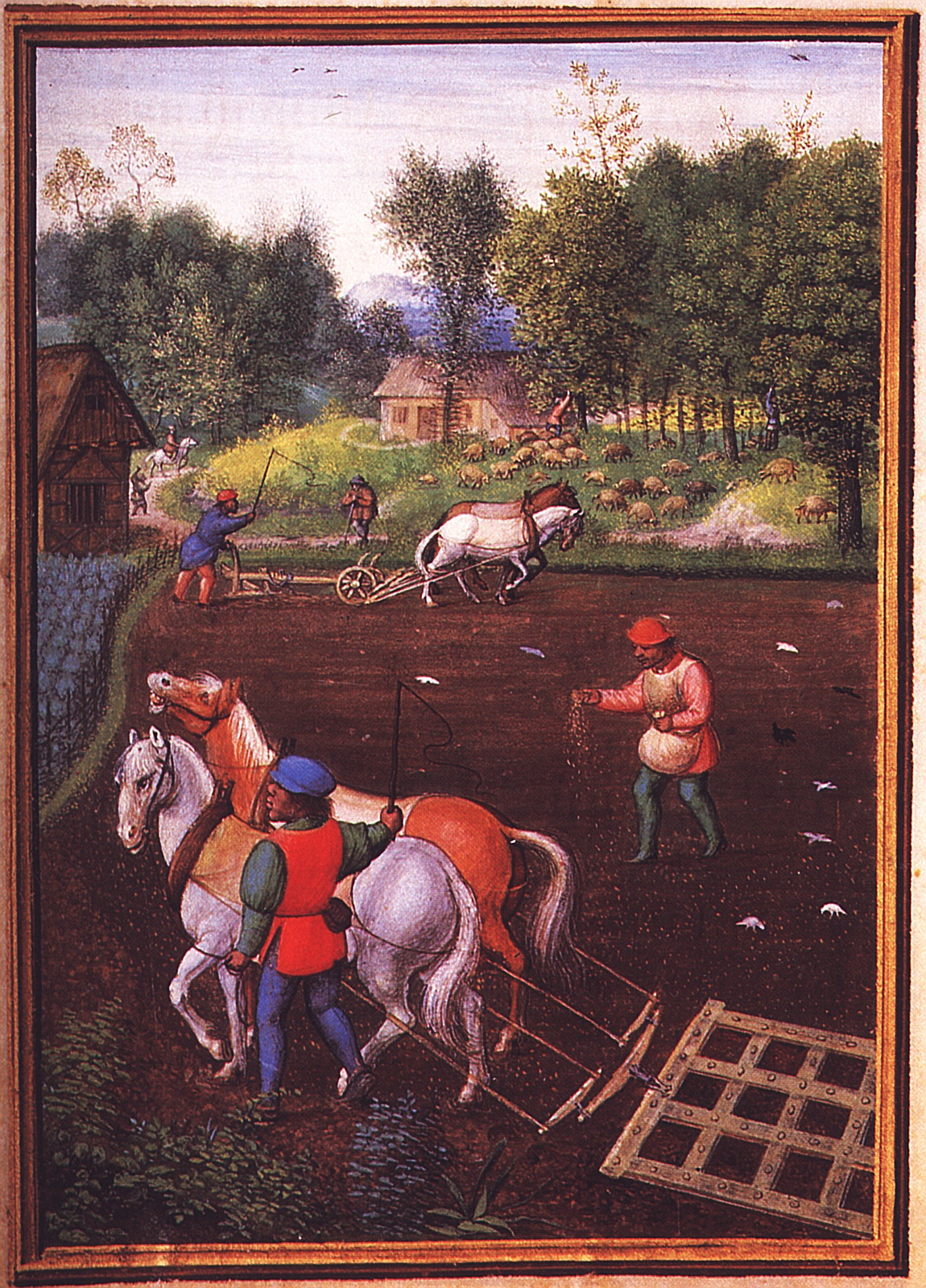|
Advance Sowing
Advance Sowing (also known as "no kill cropping") is an agricultural method developed by Bruce Maynard in 1996 in NSW, Australia that allows the production of annual crops from perennial grasslands. It involves dry-sowing crops directly into existing pastures without using tillage, fertilizer or chemicals. Principles Advance Sowing has 5 major principles: # Sowing is done when the topsoil is dry. # Coulter type sowing equipment must be used. # No Herbicides or pesticides are applied at any stage. # No Fertilizers are applied at any stage. # Grazing management must be good. The rationale behind the method is to produce crops without simplifying the biodiversity. All other commonly used sowing methods of cropping rely on eliminating some or all of the plant and animals present to create an advantage for the growing crop. Advance sow relies on complementarity of plant/animal interactions to produce biomass Biomass is a term used in several contexts: in the context of e ... [...More Info...] [...Related Items...] OR: [Wikipedia] [Google] [Baidu] |
Agriculture
Agriculture encompasses crop and livestock production, aquaculture, and forestry for food and non-food products. Agriculture was a key factor in the rise of sedentary human civilization, whereby farming of domesticated species created food surpluses that enabled people to live in the cities. While humans started gathering grains at least 105,000 years ago, nascent farmers only began planting them around 11,500 years ago. Sheep, goats, pigs, and cattle were domesticated around 10,000 years ago. Plants were independently cultivated in at least 11 regions of the world. In the 20th century, industrial agriculture based on large-scale monocultures came to dominate agricultural output. , small farms produce about one-third of the world's food, but large farms are prevalent. The largest 1% of farms in the world are greater than and operate more than 70% of the world's farmland. Nearly 40% of agricultural land is found on farms larger than . However, five of every six farm ... [...More Info...] [...Related Items...] OR: [Wikipedia] [Google] [Baidu] |
New South Wales
New South Wales (commonly abbreviated as NSW) is a States and territories of Australia, state on the Eastern states of Australia, east coast of :Australia. It borders Queensland to the north, Victoria (state), Victoria to the south, and South Australia to the west. Its coast borders the Coral Sea, Coral and Tasman Seas to the east. The Australian Capital Territory and Jervis Bay Territory are Enclave and exclave, enclaves within the state. New South Wales' state capital is Sydney, which is also Australia's most populous city. , the population of New South Wales was over 8.3 million, making it Australia's most populous state. Almost two-thirds of the state's population, 5.3 million, live in the Greater Sydney area. The Colony of New South Wales was founded as a British penal colony in 1788. It originally comprised more than half of the Australian mainland with its Western Australia border, western boundary set at 129th meridian east in 1825. The colony then also includ ... [...More Info...] [...Related Items...] OR: [Wikipedia] [Google] [Baidu] |
Crops
A crop is a plant that can be grown and harvested extensively for profit or subsistence. In other words, a crop is a plant or plant product that is grown for a specific purpose such as food, fibre, or fuel. When plants of the same species are cultivated in rows or other systematic arrangements, it is called crop field or crop cultivation. Most crops are harvested as food for humans or fodder for livestock. Important non-food crops include horticulture, floriculture, and industrial crops. Horticulture crops include plants used for other crops (e.g. fruit trees). Floriculture crops include bedding plants, houseplants, flowering garden and pot plants, cut cultivated greens, and cut flowers. Industrial crops are produced for clothing (fiber crops e.g. cotton), biofuel (energy crops, algae fuel), or medicine (medicinal plants). Production There was an increase in global production of primary crops by 56% between 2000 and 2022 to 9.6 billion tonnes, which represents a 0.7 ... [...More Info...] [...Related Items...] OR: [Wikipedia] [Google] [Baidu] |
Perennial Plant
In horticulture, the term perennial (''wikt:per-#Prefix, per-'' + ''wikt:-ennial#Suffix, -ennial'', "through the year") is used to differentiate a plant from shorter-lived annual plant, annuals and biennial plant, biennials. It has thus been defined as a plant that lives more than 2 years. The term is also loosely used to distinguish plants with little or no woody growth (secondary growth in Tree girth measurement, girth) from trees and shrubs, which are also technically ''perennials''. Notably, it is estimated that 94% of plant species fall under the category of perennials, underscoring the prevalence of plants with lifespans exceeding two years in the botanical world. Perennials (especially small flowering plants) that grow and bloom over the spring and summer, die back every autumn and winter, and then return in the spring from their rootstock or other overwintering structure, are known as Herbaceous plant, herbaceous perennials. However, depending on the rigours of the loca ... [...More Info...] [...Related Items...] OR: [Wikipedia] [Google] [Baidu] |
Pastures
Pasture (from the Latin ''pastus'', past participle of ''pascere'', "to feed") is land used for grazing. Types of pasture Pasture lands in the narrow sense are enclosed tracts of farmland, grazed by domesticated livestock, such as horses, cattle, sheep, or swine. The vegetation of tended pasture, forage, consists mainly of grasses, with an interspersion of legumes and other forbs (non-grass herbaceous plants). Pasture is typically grazed throughout the summer, in contrast to meadow which is ungrazed or used for grazing only after being mown to make hay for animal fodder. Pasture in a wider sense additionally includes rangelands, other unenclosed pastoral systems, and land types used by wild animals for grazing or browsing. Pasture lands in the narrow sense are distinguished from rangelands by being managed through more intensive agricultural practices of seeding, irrigation, and the use of fertilizers, while rangelands grow primarily native vegetation, managed w ... [...More Info...] [...Related Items...] OR: [Wikipedia] [Google] [Baidu] |
Tillage
Tillage is the agriculture, agricultural preparation of soil by mechanical wikt:agitation#Noun, agitation of various types, such as digging, stirring, and overturning. Examples of manual labour, human-powered tilling methods using hand tools include shoveling, pickaxe, picking, mattock work, hoe (tool), hoeing, and rake (tool), raking. Examples of working animal, draft-animal-powered or mechanization, mechanized work include ploughing (overturning with moldboards or chiseling with chisel shanks), rotary tiller, rototilling, rolling with cultipackers or other roller (agricultural tool), rollers, harrow (tool), harrowing, and cultivating with cultivator shanks (teeth). Tillage that is deeper and more thorough is classified as primary, and tillage that is shallower and sometimes more selective of location is secondary. Primary tillage such as ploughing tends to produce a rough surface finish, whereas secondary tillage tends to produce a smoother surface finish, such as that required ... [...More Info...] [...Related Items...] OR: [Wikipedia] [Google] [Baidu] |
Sowing
Sowing is the process of planting seeds. An area that has had seeds planted in it will be described as a sowed or sown area. Plants which are usually sown Among the major field crops, oats, wheat, and rye are sown, grasses and legumes are seeded and maize and soybeans are planted. In planting, wider rows (generally 75 cm (30 in) or more) are used, and the intent is to have precise; even spacing between individual seeds in the row, various mechanisms have been devised to count out individual seeds at exact intervals. Depth of sowing In sowing, little if any soil is placed over the seeds, as seeds can be generally sown into the soil by maintaining a planting depth of about 2-3 times the size of the seed. Sowing types and patterns For hand sowing, several sowing types exist; these include: * Flat sowing * Ridge sowing * Wide bed sowing Several patterns for sowing may be used together with these types; these include: * Rows that are indented at the even rows (so that the ... [...More Info...] [...Related Items...] OR: [Wikipedia] [Google] [Baidu] |
Herbicides
Herbicides (, ), also commonly known as weed killers, are substances used to control undesired plants, also known as weeds.EPA. February 201Pesticides Industry. Sales and Usage 2006 and 2007: Market Estimates. Summary in press releasMain page for EPA reports on pesticide use ihere Selective herbicides control specific weed species while leaving the desired crop relatively unharmed, while non-selective herbicides (sometimes called "total weed killers") kill plants indiscriminately. The combined effects of herbicides, nitrogen fertilizer, and improved cultivars has increased yields (per acre) of major crops by three to six times from 1900 to 2000. In the United States in 2012, about 91% of all herbicide usage, was determined by weight applied, in agriculture. In 2012, world pesticide expenditures totaled nearly US$24.7 billion; herbicides were about 44% of those sales and constituted the biggest portion, followed by insecticides, fungicides, and fumigants. Herbicide is also used i ... [...More Info...] [...Related Items...] OR: [Wikipedia] [Google] [Baidu] |
Fertilizers
A fertilizer or fertiliser is any material of natural or synthetic origin that is applied to soil or to plant tissues to supply plant nutrition, plant nutrients. Fertilizers may be distinct from Liming (soil), liming materials or other non-nutrient soil amendments. Many sources of fertilizer exist, both natural and Agrochemical, industrially produced. For most modern agricultural practices, fertilization focuses on three main macro nutrients: nitrogen (N), phosphorus (P), and potassium (K) with occasional addition of supplements like rock flour for micronutrients. Farmers apply these fertilizers in a variety of ways: through dry or pelletized or liquid application processes, using large agricultural equipment, or hand-tool methods. Historically, fertilization came from natural or organic sources: compost, Manure, animal manure, Human waste, human manure, harvested minerals, crop rotations, and byproducts of human-nature industries (e.g. Fish meal, fish processing waste, or B ... [...More Info...] [...Related Items...] OR: [Wikipedia] [Google] [Baidu] |
Biodiversity
Biodiversity is the variability of life, life on Earth. It can be measured on various levels. There is for example genetic variability, species diversity, ecosystem diversity and Phylogenetics, phylogenetic diversity. Diversity is not distributed evenly on Earth. It is greater in the tropics as a result of the warm climate and high primary productivity in the region near the equator. Tropical forest ecosystems cover less than one-fifth of Earth's terrestrial area and contain about 50% of the world's species. There are latitudinal gradients in species diversity for both marine and terrestrial taxa. Since Abiogenesis, life began on Earth, six major mass extinctions and several minor events have led to large and sudden drops in biodiversity. The Phanerozoic aeon (the last 540 million years) marked a rapid growth in biodiversity via the Cambrian explosion. In this period, the majority of Multicellular organism, multicellular Phylum, phyla first appeared. The next 400 mil ... [...More Info...] [...Related Items...] OR: [Wikipedia] [Google] [Baidu] |
Biomass
Biomass is a term used in several contexts: in the context of ecology it means living organisms, and in the context of bioenergy it means matter from recently living (but now dead) organisms. In the latter context, there are variations in how biomass is defined, e.g., only from plants, from plants and algae, from plants and animals. The vast majority of biomass used for bioenergy does come from plants and fecal matter. Bioenergy is a type of renewable energy that the bioenergy industry claims has the potential to assist with climate change mitigation. Uses in different contexts Ecology * Biomass (ecology), the mass of living biological organisms in a given area or ecosystem at a given time. This can be the biomass of particular species or the biomass of a particular community or habitat. Energy * Biomass (energy), biomass used for energy production or in other words: biological mass used as a renewable energy source (usually produced through agriculture, forestry or ... [...More Info...] [...Related Items...] OR: [Wikipedia] [Google] [Baidu] |





